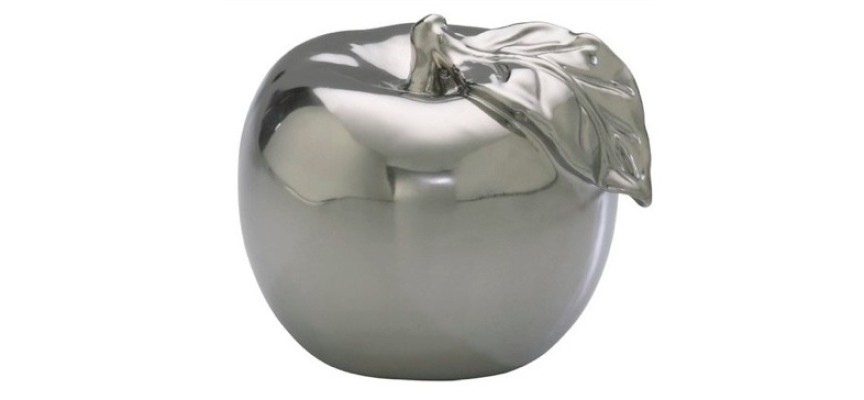Today Nomi Prins predicted radical changes in the world in 2018.
(King World News) – Nomi Prins: In last year’s roadmap, I forecast that 2017 would end with gold prices up and the dollar index down, both of which happened. I underestimated the number of Fed hikes by one hike, but globally, average short term rates have remained around zero. That will be a core pattern throughout 2018.
Central banks may tweak a few rates here and there, announce some tapering due to “economic growth”, or deflect attention to fiscal policy, but the entire financial and capital markets system rests on the strategies, co-dependencies and cheap money policies of central banks. The bond markets will feel the heat of any tightening shift or fears of one, while the stock market will continue to rush ahead on the reality of cheap money supply until debt problems tug at the equity markets and take them down.
Central bankers are well aware of this. They have no exit plan for their decade of collusion. But a weak hope that it’ll all work out. They have no dedicated agenda to remove themselves from their money supplier role, nor any desire to do so. Truth be told, they couldn’t map out an exit route from cheap money even if they wanted to.
The total books of global central banks (that hold the spoils of QE) have ballooned by $2 Trillion in assets (read: debt) over 2017. That brings the amount of global central banks holdings to more than $21.7 trillion in assets. And growing. Teasers about tapering have been released into the atmosphere, but numbers don’t lie.
That’s a hefty cushion for international speculation. Every bond a central bank buys or holds, gets a price-lift. Trillions of dollars of such buys have artificially lifted all bond prices, and stocks because of the secondary-lift effect and rapacious search for self-perpetuating returns. Financial bubbles pervade the world.
Central bank leaders may wax hawkish –manifested in strong words but tepid actions. Yet, overall, policies will remain consistent with those of the past decade to combat this looming crisis. US nationalistic trade policies will push other nations to embrace agreements with each other that exclude the US and shun the US dollar.
And finally! My new book Collusion: How Central Bankers Rigged the World comes out on May 1. 2018. You can see my book tour schedule evolve over the next few months on my website. I look forward to seeing you at the upcoming events.
Meanwhile, here are some themes to watch for 2018:
1) Central Bank “Tightening” and “Tapering”: More Talk than Action
The Fed predicted three hikes for 2017, and for the first time in three years of announcing rate increases, met its own forecast. Thus, Federal Funds Rates rose by 75 basis points.
In Europe, the European Central Bank (ECB) kept rates in the zero percent range. Gearing up to Brexit, the Bank of England raised rates by a mere 25 basis points. In Japan, the Bank of Japan (BOJ) kept rates negative. The People’s Bank of China (PBoC) didn’t alter its benchmark rate this year, though it did increase its medium-term lending facility and its open market reverse repo agreements by a whopping 15 basis points in 2017. Those aren’t exactly definitive tightening bias moves.
The ECB announced a “tapering” bias, but in practice, merely cut its monthly purchasing pledge while extending the total period of purchasing. This was a typical central bank ‘bait-and-switch’ maneuver, the net effect of which will be more QE, not less.
Japanese Prime Minister Shinzo Abe’s snap election victory last fall secured BOJ head, Haruhiko Kuroda in his spot, or at least, provided a green light for more easy money provisions to the Japanese capital markets.
In the US, Jerome Powell will assume the helm at of the Fed on February 4. How different will his policies be from those of Janet Yellen or Ben Bernanke? Not much. He voted in favor of the Fed’s monetary easing programs (even with hesitation) every time. Powell will embrace the same unlimited easy money policy on any sign of market weakness, as the global web of central banks remains as omnipresent as ever.
2) Rising Stock Markets for Now; But on Shakier Ground
Global stock markets, being the easiest place to park cheap money will rise at first in 2018. This will take place on the back of another spurt of record corporate buybacks. The move will carry on due to a self-fulfilling prophesy of return-seekers (from hedge to pension funds) until met by a span of corporate or bank scandals or geo-political risk.
In the US, the Dow Jones finished the year up 28.11% adjusted for dividends (compared to 16.47% adjusted for dividends in 2016.) President Trump took credit for the equity euphoria, as Obama and other presidents have done in the past.
The reality is that stock markets were bolstered by historically cheap money and more than $14 trillion of QE. If the Fed (or any major central bank) was to unwind the $4.5 trillion of assets it’s holding, markets would plummet. That’s why the Fed isn’t moving much, nor are other central banks, to truly reduce the size of their artificial market intervention. But when markets fall back to earth – the drop will be quick and painful.
On the flipside, there’s economic reality. Job growth is at its slowest pace since 2011, wage growth is relatively stagnant and job market participation sits at four-decade lows. While the stock market continues to shatter records, the real economy remains left behind.
3) Expanding Debt and Corporate Defaults
Debt is at epic levels any way you slice it, public debt, corporate debt, credit card debt, student loan debt. There will be a tipping point – when money coming in to furnish that debt, or available to borrow, simply won’t cover the interest payments. Then debt bubbles will pop, beginning with higher yielding bonds. Leverage is a patient enemy.
Fueled by low rates and a strong investor appetite, debt of nonfinancial companies in the US has accelerated rapidly, to $8.7 trillion, a figure equivalent to more than 45 percent of GDP. Nonfinancial corporate debt outstanding grew by $1 trillion over the past two years. US tax cuts will propel more issuance at first, due to the perception of more money available later with which to repay it. That is not the same as actual profits.
This is the year where borrowing fueled by central banks slams into a wall of growing defaults. Expect corporate defaults to rise on the back of even slight rate hikes. Defaults will deepen in non-Asian emerging markets first. That’s because those currencies haven’t done as well against the US dollar as in other countries, and central banks and governments aren’t as able to sustain that debt through various intervention maneuvers.
Meanwhile, major central banks will find ways to fuel corporate bond markets to stave that crisis off as long as they can. The ECB’s corporate buying program kicked into high gear in 2017, for instance, driving corporate spreads and rates downward. The ECB’s corporate sector purchasing program (CSPP) will expand the ECB’s corporate bond holdings to over 20 percent of its whole book, double today’s percentage.
Other central banks will try to do the same, but face headwinds. China has a $3.4 trillion corporate bond market showing signs of struggle. With more than $1 trillion of local bonds maturing in 2018-19, it will become increasingly expensive for Chinese companies to roll over financing, which is why the PBoC will maintain its QE programs in 2018.
4) Weakening Dollar, Rising Gold and Silver Prices
The dollar index that tracks the dollar against other major currencies (including the Euro and the Pound sterling) hit 14-year lows in 2017. As the index dropped accelerated, it exhibited a counter-historical diversion from the behavior of the US stock market. That patterns looks set to continue in 2018, despite any minor US rate increases that did not served to bolster the dollar against other major country currencies last year.
It’s also counter-intuitive for the currency coupled with rising rates to underperform the one with easier policy. Yet, that’s what happened between the US dollar and the Euro in 2017. The Euro’s surge will carry on given that its strength better reflects surrounding economic reality, than the dollar does for the US, where the stock market has far outpaced economic factors like wages and job force participation levels.
Similarly, gold and silver will rise against the US dollar, as bitcoin enthusiasts and gold bugs converge. Nations like China, India and Russia continued to stockpile gold in their quest to diversify against the dollar last year. China’s Gold Bar Demand rose by more than 40%. The more gold these nations buy, the more the dollar could decline relative to their currencies, especially if they sell US treasuries, or reduce purchases, to buy gold. Even my old firm, Goldman Sachs noted the bitcoin boom hasn’t dampened gold demand.
5) Ongoing Economic Power Shift from the West to the East
The economic power shift from West to East, and from the US dollar to the Chinese yuan, will continue for economic and geo-political reasons as China forges more solid global trade relationships and the US retains its nationalist stance.
Given the Trump administration’s isolationist and pro-bilateral trade agreement doctrine, China will augment its economic, military and diplomatic presence globally. The Chinese government has invested billions in the BRICS Development Bank and Asian regional organizations like ASEAN. That type of long-term groundwork will expand in 2018.
As it did in 2017, Japan embarked upon greater cooperation with India and Russia to hedge its US relationships. The Japanese economy also hit a growth streak in 2017. Its economy has been expanding since the start of 2016, the longest streak since 1999.
Japan will keep developing its Eastern influence and seek new relationships as Prime Minister Abe consolidates his power. For the Bank of Japan, that means, despite some talk to the contrary, maintaining its aggressive QE program. The ongoing supply of cheap money will provide a bid to the Japanese stock market and massive liquidity to its banks.
6) Easy ECB policy / Sterling Rising into Brexit
In 2015, Mario Draghi, the head of the ECB, decided to extend Euro-QE into March 2017. Then, he extended Euro-QE to December 2017, with a promise to do more if necessary. There was taper talk in the ECB’s QE program this year. In October, the ECB announced, that starting in January 2018, its asset purchases will follow a monthly pace of €30 billion until the end of September 2018, “or beyond, if necessary.” Ultimately, on an absolute value basis, the move was camouflage that will lead to more QE for Europe, not less.
Over in the United Kingdom, having fallen 14% in 2016 due to Brexit anxiety, the Pound executed an impressive rise helped along the way by the BOE’s 25 basis rate hike. The Pound recorded its best annual performance against the dollar since 2009, with an almost 10 percent rise. Meanwhile, the Euro gained an impressive 14.1 percent vs. the dollar.
Brexit is still looming. Yet, the Sterling has had a good run, and given the receding uncertainty over what Brexit could look like, this trend should extend in 2018. Once everyone realizes that UK banks aren’t moving to Frankfurt no matter what Brexit looks like, the Sterling will outperform the Euro. This will be positive for UK banks that have better capital cushions and are considered more stable.
7) Infrastructure Focus
Currently, the US federal government spends about a modest $100 billion annually on infrastructure. States and cities have tapped out at $320 billion in allocated funding. How they could afford increases at more than double that rate is a mystery.
Yet, the US remains at a huge infrastructure disadvantage relative to Asia and Europe. Any official talk of a bill combined with associated news coverage alone would lift bidding interest for government contracts, and share prices of companies in the sector.
And we will hear more talk about a bi-partisan infrastructure bill and associated public-private partnerships in the wake of the Trump – GOP tax bill victory and into his second year in office. The problem is that his proposed spending of at least $200 billion over the next decade is contingent on $800 billion coming from state and local sources. Many states don’t have the budget to meet such infrastructure demands. This means other funding or increased federal spending will be hotly debated in 2018. Engineering and infrastructure companies will reap the benefits of related expectations and attention.
8) Cryptomania Grips More Tightly
As for Bitcoin, despite its predisposition to being a Ponzi scheme, it should rise (and sustain its high degree of volatility) through 2018 for a few reasons. First, many funds have been green lighted to get involved in the second half of 2018 and ETF’s are on the horizon, albeit with a plethora of surrounding problems and regulatory hesitations. Second, futures exchange activity will broaden the market. Third, establishment banks like Goldman Sachs have announced plans to set up crypto-trading desks and promoted the possibility of bitcoin becoming a legitimate global currency.
There will be growth of the number and diversity of exchanges beyond Coinbase in the manner of PayPal which is already a player in that space, as well as for Coinbase itself. Expect the start of many payment exchanges that can process both regular currencies and cryptocurrency transactions ala the dot com bubble, rendering the idea of crypto-independence more and more fuzzy.
Conversations amongst the financial elite at G7 gatherings and other similar forums will encapsulate more crypto focus. Central banks will ultimately create or utilize some elements of crypto currencies for themselves, and adopt ways to regulate the market, as will regulatory agencies that will focus more on crypto than regular banking activities (both need that monitoring to protect people.) Meanwhile, there will be more buying of cheaper crypto currencies (or assets as I consider them) like Litecoin and Ripple. The fight between those that believe in crypto’s decentralized nature will hit a wall of resistance from banks and central banks, but that fight might take years.
9) Going Digital and Green
Whether you use it, invest in it, or are wary of it – one thing is certain, mining crypto currencies require substantial amounts of power. While Bitcoin’s value was up seven-fold in 2017, its power requirements shot up by 43% just since October. Much of this power comes from generators fed by fossil fuel sources. That’s not clean power.
Green technology for uses in blockchain related products will be a hot area in 2018, as will be clean and renewable sources of energy in general. Solar energy costs have fallen 62% since 2009 and could be cheaper than coal in less than a decade. As traditional fossil fuel economies from Saudi Arabia to Mexico begin to shift, green competition could drive down these costs further in 2018 and render clean energy more profitable.
Beyond the crypto space, green jobs will boom, in some countries more than in others. China continues its efforts at a record pace has pledged spend up to $1 trillion on infrastructure projects in 64 countries with which it seeks to strengthen alliances. Much of that will go into sustainable energy investments. China leads the world in investment in renewable energy projects with an estimated $32 billion spent overseas.
Sustainable energy means jobs elsewhere, too. In 2018, Tesla plans to open the biggest battery factory in the world in Nevada. The UK government has announced massive £246 million investment in the automotive electrification research and development sector.
10) Dangers of Trump’s Deregulation Entourage
The Securities and Exchange Commission (SEC), the regulatory agency tasked with protecting investors, shareholders and citizens from fraudulent financial system activities, is currently run by a man that served as Goldman Sachs’ outside counsel during its subprime crisis related spate of settlements. Goldman Sachs requested of him, that the it be released from annual reporting of its lobbying policies or payments.
He’s not alone in those sorts of allegiances. The Office of the Comptroller of the Currency (OCC) is run by a former colleague of Treasury Secretary Steven Mnuchin, Joseph Otting, who was the CEO of OneWest (the formerly failed California-based bank, IndyMac). That’s the bank that Mnuchin and his billionaire friends took over before exacting alleged tens of thousands of foreclosures and turning it around for a hefty profit. Then there’s the Fed, where Jerome Powell has expressed his disinterest in bank regulations over the years. The Consumer Financial Protection Bureau is now run by Mick Mulvaney – a man that has derided the very existence of the agency.
Ultimately, the mother of all deregulators is presiding over the US Treasury Department. Steven Mnuchin has deflected the notion of reinstatement of a modern Glass-Stegall at every possible moment. He waived away regulation for AIG, the reckless insurance company at the epicenter of the financial crisis, by giving the firm a green light to stop reporting risk details to the Financial Stability Oversight Council over which he presides.
Trump speaks of deregulation with pride. Nearly every regulatory body in his purview tasked with monitoring the financial system is run by someone who has benefited from its unfair practices or somehow believes too much regulation over bailed out big banks is a bad thing. Historically, severe crises follow periods of lax oversight and loose bank regulations. The question isn’t “if” there’s one budding, but “when” it will happen.
The last time deregulation and protectionist businessmen filled the US presidential cabinet was in the 1920s. That led to the Crash of 1929, the Great Depression, and ultimately, brought us to World War II as I explained in All the Presidents’ Bankers.
During the past decade, the helium that inflated asset bubbles and fortified the global banking system was central bank Collusion. At some point the financial dam is destined to break – it has to, and it will. On that sober note, I leave you with this quote from The Rich Boy written in 1926 before the Great Depression by F. Scott Fitzgerald:
“The world, as a rule, does not live on beaches and in country clubs.”
Whoever we are and wherever we live, may we face the challenges of this year, and our times, with awareness, courage and action.
Also of importance regarding the opportunity in gold!
The Northern Miner
Site visit: Maple Gold Mines takes fresh look at Douay
Ivanhoe alumni see potential in forgotten’ gold district in Quebec
By Trish Saywell
AMOS, QUEBEC — Over the last four decades, a series of owners have carved out a resource of nearly three million ounces of gold below the 30 metres of overburden that blankets the Douay project in the Abitibi Greenstone Belt of northern Quebec.
But the structures controlling the distribution of that gold — 2.8 million inferred ounces from 83.33 million tonnes grading 1.05 grams gold per tonne — remains largely a mystery.
“It’s complex structurally – I don’t think there’s been a really concerted effort to try to understand what controls the gold mineralization,” Fred Speidel, Maple Gold Mines’ (TSXV: MGM; US-OTC: MGMLF) new vice-president of exploration, says on a recent tour of the property.
Speidel and his colleagues at Maple Gold Mines are determined to find out and the junior has assembled a world-class team – several of whom, like its new president and CEO Matthew Hornor – cut their teeth working for Robert Friedland’s Ivanhoe group.
Hornor spent more than a decade within the Ivanhoe family of companies and has brought with him Ivanhoe alumni David Broughton as a director and head of Maple Gold Mines’ technical committee, along with Jay Chmelauskas, as chairman of the board.
Broughton worked for Ivanplats (now Ivanhoe Mines [TSX: IVN; NYSE: IVN]) from January 2008 through October 2016 and was co-awarded PDAC’s Thayer Lindsley and AME BC’s Colin Spence awards for world-class discoveries at Kamoa in the Democratic Republic of Congo and Flatreef in South Africa.

Chmelauskas headed up Jinshan Gold Mines for five years in China’s Inner Mongolia region, before Ivanhoe sold its 42% stake in the company to China National Gold Group, in 2008. The mining executive, who prior to Maple Gold Mines was CEO of Western Lithium before its merger with Lithium Americas, continues to work on special projects for the Ivanhoe private equity arm HPX.
“We come from the Ivanhoe world where excellence was demanded every second of the day,” says Hornor. “We’re occupying every single position with the most excellent of people to make sure this thing is a screaming success.”
And like Ivanhoe, the culture at Maple Gold Mines is to embrace trial and error as a necessary part of making discoveries.
“You have to have an open mind, you have to be prepared to let people test targets,” Broughton tells analysts and investors attending the project tour in November. “I was given that opportunity when I was working for Ivanhoe in places like South Africa and Congo. Those deposits wouldn’t have been found if we hadn’t taken that approach, of saying, ‘Let’s be creative, let’s drill some wildcat holes,’ and that’s how success happened.”
In this case, the company has a good head start. There’s an archive of more than 220,000 metres of historic drill core to interpret that dates to the initial Douay discovery more than forty years ago by Inco Gold in 1976. The core is in excellent condition and the site even has a headframe built by Aurizone Mines in the 1990s and never used.

“We’ve already got 3 million ounces here more or less in-pit, and it’s much larger if you can un-constrain it, so we’re well on the way to having something that is viable and with a lot of upside still to come,” Broughton says. “You’ve got this huge land package, you’ve got new ideas and people coming in, and it’s really exciting because you can make discoveries when you’re in that situation.”
While there is a lot that is unknown about Douay and its surrounding 370-sq.-km land package, what Speidel and Broughton do know is that the majority of the gold found there, so far, is associated with a syenite gold system that forms part of a 7-km-long trend of mineralized zones. These zones are found within the central part of the project’s 55 km of strike length along the Casa Berardi Deformation Zone.
The intrusive-related style of mineralization is also present at several other deposits that have been recently discovered, such as Canadian Malartic, now owned by Agnico Eagle Mines (TSX: AEM; NYSE: AEM) and Yamana Gold (TSX: YRI; NYSE: AUY), about 157 km to the south of Douay, Osisko Mining’s (TSX: OSK) Windfall project, between Val-d’Or and Chibougamau in the Abitibi, and Alamos Gold’s (TSX: AGI; NYSE: AGI) Young-Davidson mine, 60 km west of Kirkland Lake in northern Ontario.
Closer to home, Douay is 81 km to the west of Hecla Mining’s (NYSE: HL) Casa Berardi mine and 123 km to the southwest ofDetour Gold’s (TSX: DGC) Detour Lake mine. Past-producing mines in the high-rent neighbourhood include Sleeping Giant, an orogenic gold deposit 50 km to the south, and Selbaie, a VMS deposit, 66 km to the north.
The interesting thing about the region along the Casa Berardi break, Speidel says, is that it contains a variety of deposit types in addition to syenite-related gold systems. There are volcanogenic massive sulphide (VMS) deposits — sulphides that accumulated on the sea floor that can be rich in copper, zinc, lead and gold. There are orogenic gold deposits — the more typical quartz-gold veins — such as the Casa Berardi and the Sleeping Giant mines.
Elsewhere in the Quebec portion of the Abitibi Greenstone belt there are other intrusive-related gold systems (IRGS), similar to Douay, such as Lac Shortt, Metanor Resources’ (TSXV: MTO) Bachelor Lake mine, and Malartic, which are associated with alkaline intrusives or intrusive complexes, including carbonatites, such as is the case at Douay and Lac Shortt. (Lac Shortt, 165 km east of Douay, was a small gold mine that produced 2.7 million tonnes grading 4.6 grams gold and operated for six years, closing in 1990.)
“One of the things that I was really impressed about here is that we’re sitting in a system where there are half-a-dozen different types of gold deposits, all associated, more or less, with the Casa Berardi break,” Broughton says. “It’s not just intrusive-hosted gold. There are other opportunities here under cover. The Sleeping Giant mine has past production and resources of about 1.3 million ounces of gold at very high grades. It’s sitting just to the south of us, adjacent to the same splay that runs through the southern part of our property, so why couldn’t there be those sorts of things here? We certainly have high-grade intersections.”
Meanwhile, Canadian Malartic is a very similar deposit type to Douay, as it’s also associated with felsic to intermediate porphyritic rocks that are borderline alkaline, Speidel says.
“We use Malartic as a model and in the remote spectral geology study we’re currently doing, we’re using Malartic as a calibration site to look for similar signatures at Douay, because it’s a big open pit and the spectral response is fairly obvious.”
“I’m really interested in these intrusive-related gold systems because of things like Malartic,” Broughton says. “These give you an opportunity to bulk mine what probably 25 years ago you couldn’t have done, and put together large deposits with a lot of ounces. And certainly since I left the Abitibi and come back, that’s happened in Timmins in a couple of places, and now at Malartic, and I think it can happen here. So I want to look at these styles of systems. How do we find them? What do they look like under cover because we are sitting on a lot of cover here and it’s not about what we see, it’s about what we don’t see.”
Intrusive-related systems like Malartic are typically large-tonnage, low-grade and amenable to open-pit mining and they weren’t on anyone’s radar until fairly recently, Broughton says, adding that in his early career he was used to thinking of the Abitibi as having Hollinger-type gold quartz veins. “These are different,” he says of the intrusive-related systems.
“They’re disseminated gold mineralization. So if you look at the core and you walk around, you don’t see many veins and you don’t see much visible gold. It’s a very different gold mineralization than the better known style, and that has implications for exploration.”
Broughton notes that intrusive-related gold systems are usually associated with relatively small intrusions, syenitic in composition, and are generally oxidized, which means they often have magnetite or hematite, which means there are geophysical implications in terms of detecting them.


“If you look at a map of the Abitibi, you’ve got very large areas of igneous rocks, of plutonic rocks, big, big granites, and so on. And that’s not what we’re talking about here. We’re talking about small little porphyry systems that come off much larger ones, in a similar way as what you see if you go to British Columbia and you look at the systems at places like Red Chris. So you’re not looking for these large masses. They’re actually quite small targets, but they can, obviously, be very attractive.”
The geologist also notes that they tend to be smaller intrusions, often later in age, and associated with what are known as Temiskaming-type sediments in the Abitibi. The intrusions also like to come up on faults, he says, which means they’re often on geological boundaries between mafic and sedimentary packages.
“If you look at Malartic, the mineralized zones that they’re mining are largely to the south of the main structure, the Cadillac-Larder break, and actually in sedimentary rocks,” Broughton says. “At Douay, it’s in mafic rocks and that has implications again on what these things look like geophysically and geochemically. So there are lots of things we can use under cover to try to understand targeting.”
Over the last 18 months, Maple Gold has re-logged much of the historic core. Since joining the company in late 2017, Speidel started examining 27,000 metres of core that had yet to be re-logged. His goal: To characterize gold mineralization associated with clusters of higher grade and broader gold intercepts and select high quality targets for the company’s 2018 drill campaign.
The 25,000-30,000-metre drill program will kick off on Jan. 15 and include reverse circulation (RC) and diamond drilling in brownfield and greenfield areas. About 50% of the program will test potential new discovery targets, including diamond drilling of the Northeast syenite target and top-of-bedrock RC drilling of additional greenfields targets. The remainder of the program will consist of step-out and infill drilling the existing resource.
In addition to improving geological and exploration models from the re-logging work, the company plans to test a significant amount of the historic core that was never assayed for gold. An initial 8,000 samples have already been collected, and during the final phase of re-logging, another 10,000 samples will be collected. The new assays will help identify mineralization vectors and improve geo-statistical modelling of the resource.
Given that much of the project over the Casa Berardi Deformation Zone is covered by post-mineral glacial deposits, conventional soil sampling is ineffective at targeting bedrock anomalies.
“We want to update the geological model and then update the block model,” Speidel says. “It seems that sometimes, as may have been the case here, the two models are developed with a degree of independence from each other, rather than using your geological model to constrain your block model. So we want to fix that.”
So far early re-logging work has found evidence that when there is higher grade material (anything over a gram gold), there will be a significant structure within a few tens of metres of it, Speidel says, and there is an association that needs to be defined between the syenite, favorable mafic wall rocks and structures.
“The old logs may indicate that there’s a fault zone here, there’s a shear zone there, there’s a fracture zone over there, but no one has really tried to pull it all together in terms of what this actually means and which structures may be more relevant, because they’re not all the same,” he explains. “We want to understand what controls the higher grades of gold within the sections we’re logging, but ultimately we want to get a 3-D model of the structural situation that we have. I’ve done some re-logging myself because I have to understand the rocks and contribute my own ideas about the whole system.”

“That’s an important point,” Broughton chimes in. “I was recently in Africa for two weeks and other than travel time and one day in the office, I spent my time in the field and logging core. If you can’t get your senior people logging core, and they’re pushing paper, you’re not getting value.”
For Speidel, whose career started in northern Quebec, working in the Abitibi is a homecoming of sorts. In his early days the geologist was responsible for brownfield exploration around Lac Shortt, a similar type of deposit as Douay. He also played a role in the discovery of the Lac Troilus deposit, 120 km north of Chibougamau. Lac Troilus produced over 2 million ounces of gold and almost 70,000 tonnes of copper from an open pit between 1996 and 2010.
Troilus was originally thought to be a shear zone-hosted gold system but turned out to be intrusive-related. And like the early days at Douay, people thought of Troilus as a potential underground project and discounted the lower grade material. “Troilus was sitting on the shelf and the person running the exploration office for Minova at the time thought outside of the box and said, ‘Think open pit.’ So he passed the project to me and we did a bunch of drilling, and we ended up redefining the model as more of a porphyry kind of gold system.”
The average grade at Troilus was around 1 gram, but there was a feeder zone at depth in the pit that was double the grade … Douay has potential for multiple feeders and certainly that’s what it looks like when you plot out the gold accumulations.”
Later, while leading exploration teams in Central and South America for Minnova, which later became Inmet Mining, and is now First Quantum Minerals (TSX: FM; LON: FQM), Speidel was involved in several gold and copper discoveries, including Cobre Panama, the enormous copper development project in Panama. Prior to joining Maple Gold Mines, he was regional exploration manager in North America for Antofagasta (LON: ANTO; US-OTC ANFGY).
”David and I both started in the Abitibi and then went international so we can come back and apply different thinking,” Speidel says. “We haven’t been in the Abitibi for most of our lives so some of the methodologies that we’ve used elsewhere are applicable but not commonly used around here, like remote spectral geology, for instance, and a few other things.”
“Coming back to this area for me is exciting because of the time gap,” Broughton adds, noting that after starting in the Abitibi more than 30 years ago, he spent the following two decades in Africa. “When you come back and you’ve forgotten your preconceived ideas you can bring in new ideas,” he says. “And you can ask questions that maybe other people don’t ask and do things that other people maybe don’t do and that’s a great way to make discoveries.”
The geologists also agree that the common perception of the area around Douay is that there is nothing left to find, an attitude that Speidel recalls encountering when he wanted his previous employers to let him look for deposits in Chile. “People would say, ‘It’s a mature country for exploration and the land is all staked and you won’t find anything.’ And I would say, ‘Well, it’s mature in some belts, and it’s mature from zero down to 400 metres, but it’s not mature below 400 metres depth.”
“A lot of my career in a lot of cases has been going into places which were felt to be of little interest,” Broughton adds. “People didn’t think there was much potential, and we were successful. That happened at Platreef in South Africa and it certainly happened at Kamoa and at other places, as well, and this is another example of really a whole district that has kind of been forgotten or written off by a lot of people. It’s sometimes not what you see but what you don’t see, and I think there’s a lot of truth in that here.”
The Douay resource remains open along strike and down plunge, and the company believes brownfields exploration potential for resource expansion is excellent. The deepest hole was drilled to 958 metres; the average hole depth for the current 761-hole database is 293 metres.
“Abitibi systems are mesothermal, mid-crustal systems that have tremendous depth extent,” Broughton notes. “I worked underground at Kerr-Addison, 4500 feet below surface. Macassa is 8,000. These things go a long way down. Douay has few holes below 700 metres. And so to me, there’s a lot of down plunge extent that we will need to bear in mind when we’re doing our exploration.”

Currently, Douay’s pit-constrained resource is contained in eight separate zones: 10, 20, 531, Central, Douay West, Northwest, Porphyry and Main.
The Main zone averages 1.5 grams gold per tonne, Douay West 2.36 grams gold, the Northwest zone 2.15 grams, and the larger Porphyry zone around 1 gram. The smallest zones (10, 20, and Central) average 1.2 grams gold.
The distance between the Main and Douay West zone is about 6.6 km end to end.
The company has also defined a new zone it is calling the Northeast syenite target, which is 6 km by 1 km, and virtually untested by drilling. The target is about 2.6 km to the northeast of the Porphyry zone and Maple Gold plans to drill a minimum of 11 core holes into the target in the first quarter of 2018.
In the Porphyry zone, there are at least four clusters of higher-grade intersections, at greater than 2 grams gold per tonne, and Speidel surmises they could represent structural intersections or feeder zone, particularly in the up-dip areas where there are potential starter pits.
Highlights of the company’s 2017 spring-summer drill program include 9 metres of 4.53 grams gold, including 1.5 metres of 15.7 grams gold in the central segment of the Porphyry zone and 1.2 metres averaging 13.35 grams gold. In the Douay West Zone, drilling returned a 7.5 metre intercept of 1.39 grams gold, 20.6 metres of 2.11 grams gold and 23.1 metres of 2.20 grams gold.
Previous drill campaigns returned 21.18 grams over 10.5 metres; 9.27 grams gold over 21.4 metres in Douay West; 14.41 grams gold over 16.9 metres in the Main zone; 2.63 grams gold over 55.7 metres in the 531 zone; and 2.13 grams gold over 60 metres in the Porphyry zone.
“We’ve expanded the area of syenite to roughly ten kilometres, that’s the brownfields target area right now, but even outside of that, along what looks to be the north strand of the Casa Berardi fault zone, there are a number of other areas that have syenite, and there’s very little drilling that’s been done out there so there’s quite a lot of upside potential in terms of finding additional resource clusters all along the Casa Berardi fault zone and secondary structures,” says chairman Chemelauskas.
“This team is following the discovery model, not the finance model, and that means we’re telling our geologists ‘don’t be afraid,’” adds Pierre Lebel, who sits on the company’s board of directors and was awarded Mining Person of the Year in 2012 by the Mining Association of British Columbia for his contribution to mine development in British Columbia. “We’re not going to blame anyone for taking a chance and not getting a good result because we know that we’re not going to get results every time and we’re going to drill some dry holes.”
“So often junior companies have a financing model in their approach – they don’t want to get too far away from the known, and instead nibble around the edges, and it takes so long when you do it that way. You eventually get there, but this team really has a different attitude.”
In the meantime, Maple Gold’s executive management team is criss-crossing the globe marketing the story. “A big part of what we’re doing here is putting this company in play,” says Chmelauskas, adding that the company has also recruited Greg Orr, a former partner at Deloitte, as its chief financial officer, to bring the company’s financials into shape.
“Matthew is doing laps of the world talking to people … and Greg has brought our financials up to that senior company standard, so when Matt brings in his Japanese colleagues that want to buy into this business – or any of the intermediate or senior companies that we expect to pass this company on to – we’re ready for them today.”
Hornor, who speaks fluent Japanese and honed his skills at Ivanhoe where he negotiated project financings for development projects with international banking syndicates, structured strategic alliances and directly negotiated equity raises of more than $450 million, is enjoying the challenge.
“My job is the fun one — I get to sell a $2.50 stock for a quarter today and watch it grow and meet that objective — so I’m having a great time,” says Hornor.
At press time in Toronto the company was trading at 24¢ per share within a 52-week range of 15¢ (December 2016) and 46¢ (March 2017).
The junior has 182 million total shares outstanding for a market cap of $44 million.
***ALSO JUST RELEASED: A Wild Start To 2018 – Key For Gold, US Dollar, Oil And Something We Haven’t Seen in 10 Years! CLICK HERE.
© 2018 by King World News®. All Rights Reserved. This material may not be published, broadcast, rewritten, or redistributed. However, linking directly to the articles is permitted and encouraged.







